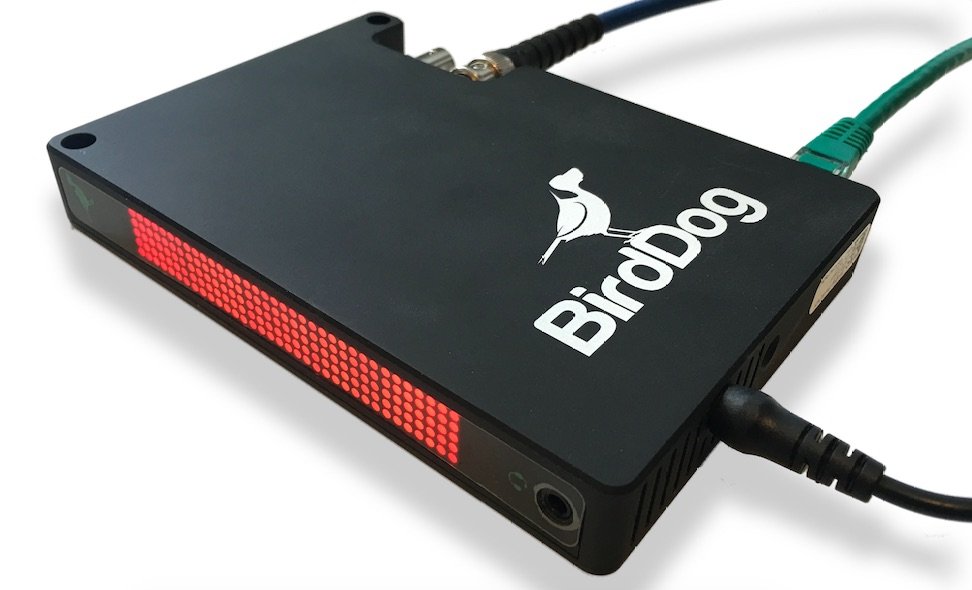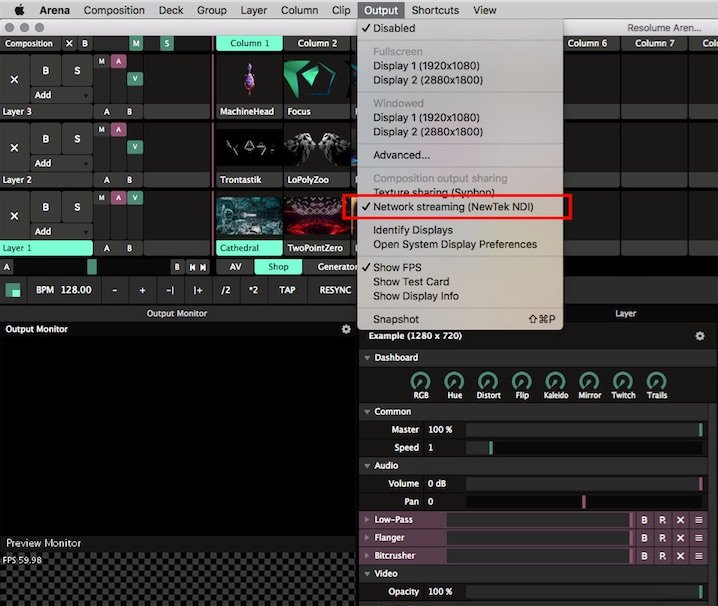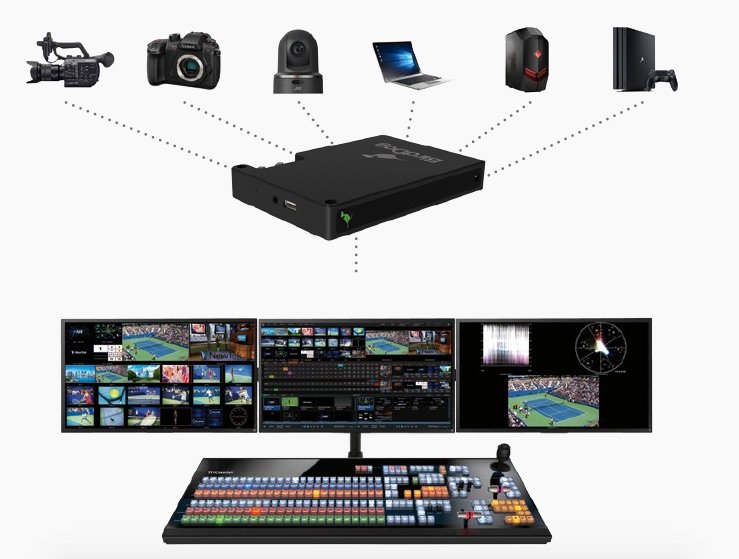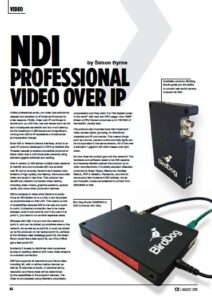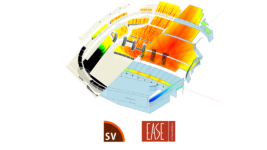News
27 Aug 2018
Professional Video Over IP
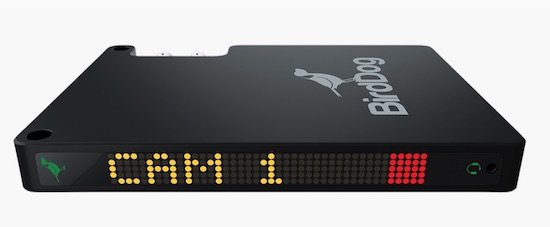
Subscribe to CX E-News
Video
Professional Video Over IP
by Simon Byrne.
Unlike professional audio, pro video has stubbornly resisted the transition to IP (Internet Protocol) for a few reasons. Firstly, video over IP continues to evolve and, up until now, has had issues such as the lack of adequate bandwidth and too much latency. As the investment in SDI equipment is significant, moving from SDI to IP represents a fundamental and expensive change.

Australian product, BirdDog Studio gives you the ability to convert real world camera outputs into NDI
Enter NDI or Network Device Interface, which is an open IP protocol developed in 2015 by NewTek (the Tricaster people) to enable compatible products to share video over a LAN (local area network) using standard gigabit switches and cabling.
Now in version 3, NDI allows multiple video systems to identify and communicate with one another over IP, and to encode, transmit and receive many streams of high quality, low latency, frame-accurate video and audio in real time. This protocol can benefit any network-connected video device, including video mixers, graphics systems, capture cards, and many other production devices.
NDI is probably to video what Dante is to audio. Once an NDI stream is on a LAN, it can be picked up anywhere else on that LAN. This opens up lots of possibilities because SDI is one-way and point-to-point. A physical connection has to be made between point A and point B, and if you want it at point C, you have to run another separate cable.
Whereas with NDI, it is put onto the network at point A, and can be picked up anywhere else on the network. So as well as at point B, it could be picked up by the producer on her laptop (point C), perhaps at the foldback desk sidestage (point D), the Green Room would like a feed (point E), can Front Office get a feed (point F)? Suddenly it is easy to distribute vision anywhere across an existing network with many video streams on a shared connection.
NDI fully supports all resolutions and frame rates including 4K, with or without alpha channel, as well as 16 channels of audio. In practical terms, resolution and frame rates will be determined by the capabilities of the endpoint devices. The video is compressed using Newtek’s proprietary compression and they claim it is “the fastest codec in the world” with very low CPU usage. One 1080P stream at fifty frames consumes up to 100 Mbit of bandwidth, usually less.
The protocol also includes tools that implement video access rights, grouping, bi-directional metadata and IP commands. This means things such as comms, camera control and tally lights can be incorporated in the same streams. All of this over a standard 1 gigabit LAN which keeps cost right down.
So how does the content get onto the network? The hardware and software needs to be NDI capable and because Newtek opened the protocol up to other manufacturers, it is widely adopted. Selected products by Green Hippo, Resolume, Avolites, Matrox, PVP 3, Dataton, Panasonic, and Avid to name just a few implement NDI natively, but as you’d expect, boxes are available to convert from SDI/HDMI to NDI.
Melbourne company BirdDog make a range of world-leading SDI and HDMI to NDI converter boxes which gives you the ability to incorporate ‘old school’ cameras and devices onto an NDI network. The BirdDog Studio NDI is a nicely built device that is powered over Ethernet, contains full tally, an audio intercom app, and can be used as a cross converter (HDMI to SDI and vice versa).
The team at BirdDog are working on firmware which enable their devices to convert from NDI back into SDI and HDMI which means your network output can go to any display device. This is the final link in the production chain which opens up NDI to all types of projectors and screens.
Like Rode microphones and Dante, BirdDog is another example of Australian innovation in the production industry, taking on the world! We love that.
Because NDI is an IP network protocol, you are no longer bound by the usual hardware limitations, and a world of software applications opens up. A primary design requirement is that it works on standard 1 gigabit networks, so assuming you have quality 1 gigabit switches, cabling, and healthy bandwidth available between devices, you can expect good results.
In my test setup, I had a camera connected to a BirdDog Studio via HDMI, which was connected to my office 1 gigabit network with a Cisco switch. The BirdDog Studio broadcasts to all other devices on the network that it is there. Therefore any NDI capable product on the network already knows that the camera is online and it is simply a case of picking up its feed.
I ran two copies of Wirecast on separate machines, Resolume Arena on another, and VMIX Desktop on a fourth machine which allows me to route that machine’s displays as another NDI Source on the network (useful for Powerpoint or Keynote). It all just worked! But what about latency?
As with all things digital video, there is latency, but it is no more than SDI or HDMI devices. Because the LAN is a controlled environment, Newtek have made their codec highly efficient which means the latency is low. As a consequence, NDI is not a technology that will work on the internet, it is strictly for use on LANs.
Can you do wireless on NDI? Yes, but it is in its infancy. The Newtek Spark range of Wifi, HDMI/SDI to NDI converters use a more compressed version of NDI to get the throughput into the network reliably from Wifi. Yes it works great in a lot of situations, but is no substitute for high end wireless SDI solutions just yet.
Where does NDI fit in when compared to AVB? It is like comparing apples to oranges. AVB is a collection of open IEEE standards when combined, form the basis that allows time-synchronised low latency streaming through networks. That is great for video and especially audio. At this stage it is not a complete solution and it is not quite plug and play. This is why the AVNU Alliance (of manufacturers) recently announced Milan, which is an initiative to get their act together so as to make AVB seamless between manufacturers.
NDI however was developed aggressively by a single development team, to be seamless, plug and play, and for a very specific purpose. This, by the way is in part why Dante became so strong in audio. It too is an end-to-end, plug and play solution that was developed aggressively by a single organisation.
In summary, NDI offers a low cost, low latency, professional video network protocol, capable of delivering end to end solutions, ideal for corporate and live show environments.
Check it out!
This article first appeared in CX Magazine August 2018 – print and online. CX Magazine is Australia and New Zealand’s only publication dedicated to entertainment technology news and issues. Read all editions for free or search our archive www.cxnetwork.com.au
© CX Media
Subscribe
Published monthly since 1991, our famous AV industry magazine is free for download or pay for print. Subscribers also receive CX News, our free weekly email with the latest industry news and jobs.

